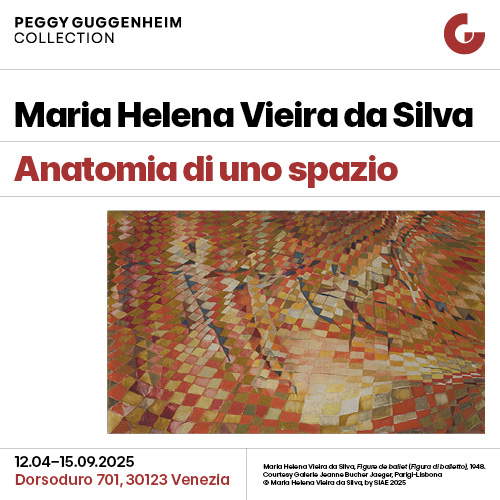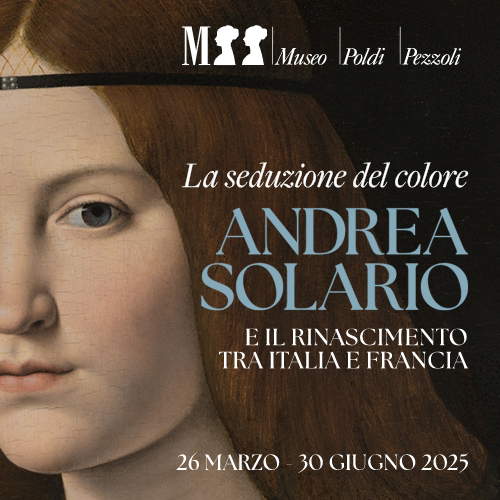Underwood No. 5: the typewriter that revolutionized the art of writing
Long Island, July 1922. The sound of ticking fingers pressing on typewriter keys spreads throughout the house: it is a hot summer day and Francis Scott Fitzgerald, sitting at his desk, is intent on bringing to life one of the most beloved stories of the 20th century. Before him, gleaming and majestic, is his working ally, the one who enabled him to put on paper one of the greatest masterpieces of American literature. The writer, in fact, to create The Great Gatsby and its characters, chose to do so through an Underwood typewriter. The American firm produced machines that gave life to hundreds of other stories and characters by distinguished writers such as Ernest Hemingway or Dorothy Parker: among its models, one of the most successful was the Underwood No. 5, a unique piece of design, innovation and modernity.
Underwood, a company founded in 1874 by entrepreneur John Thomas Underwood, was initially involved in supplying carbon paper and printing ribbons for typewriters manufactured by other companies, notably E. Remington and sons: when the latter decided to start in-house production of the accessories needed for printing, Underwood, in order to survive the change, expanded its market by starting to produce its own typewriters in turn. Thus was born in 1895 the Underwood Typewriter Company. The first Underwoods, the No. 1 and No. 2, both “standard” typewriters of the time, were made in collaboration with German-American inventor Franz Xaver Wagner, and between 1896 and 1900 some 12,000 were produced. Starting in 1900, No. 3 (a wide carriage machine, meaning that the width of the paper used was greater than in earlier models), No. 4, and finally, towards the end of the year No. 5 was produced.
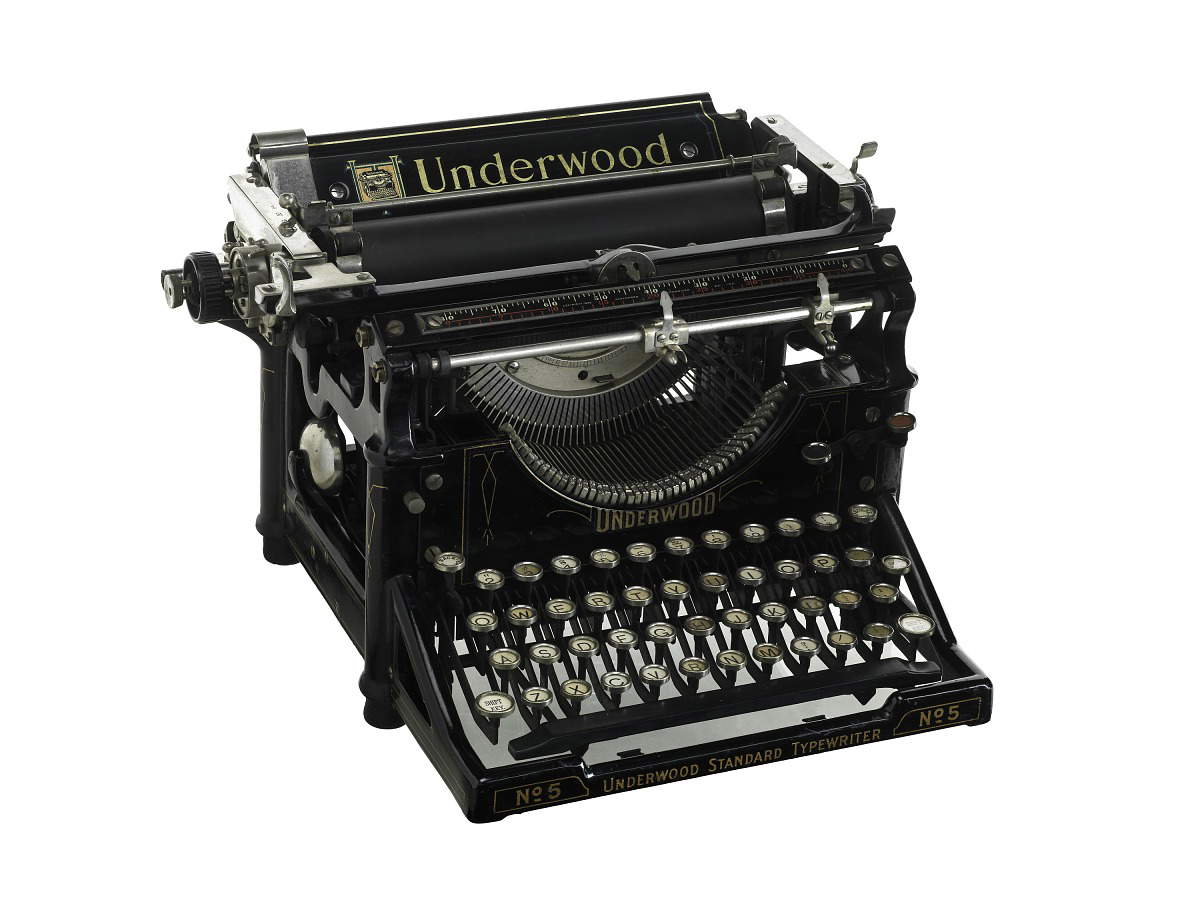
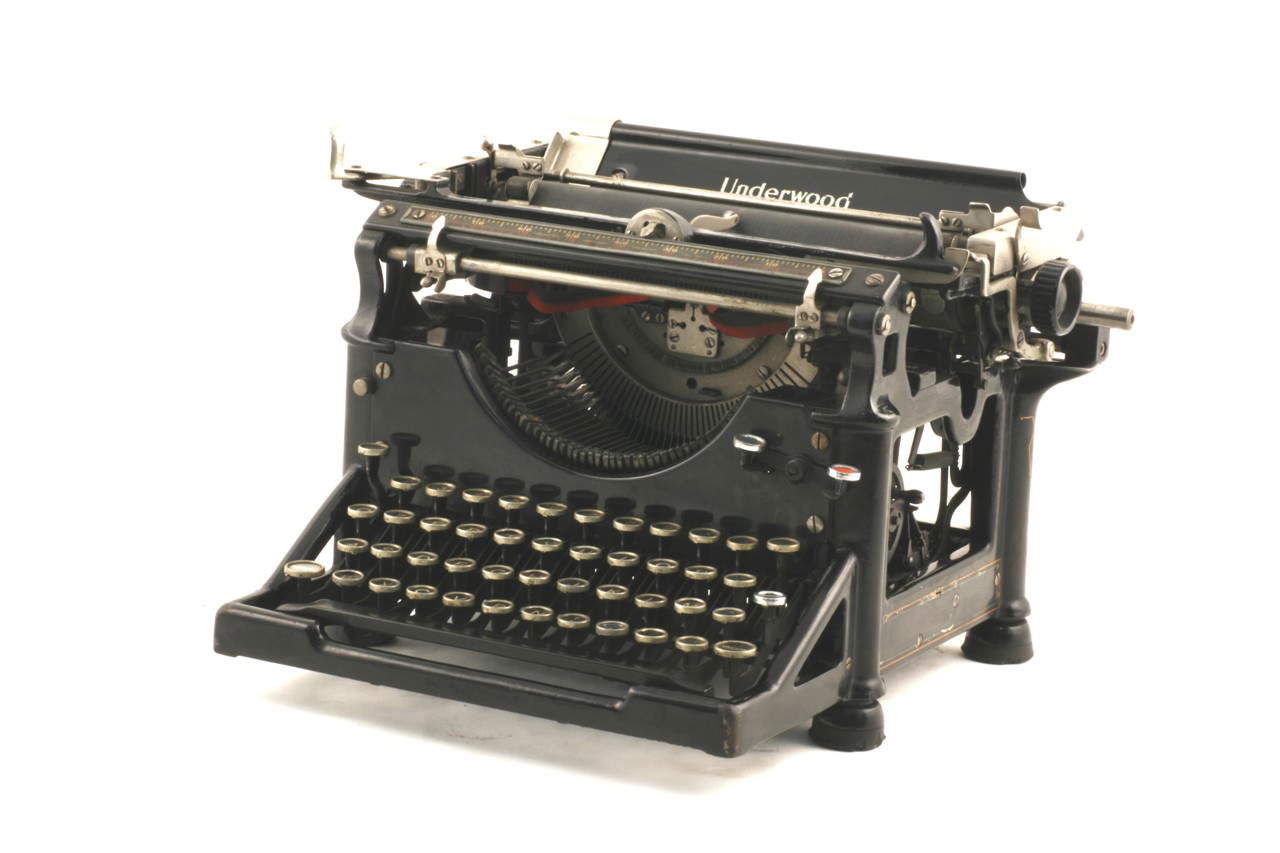
The Underwood No. 5 represented a significant step forward from previous models, both technologically and aesthetically: not only did its writing capacity make it suitable for producing long and complex texts, which increased its effectiveness in professional environments such as offices, newsrooms, and government agencies, but the machine is best remembered for its innovative front-stroke mechanism. In fact, unlike earlier typewriters, which struck the bottom of the typewriter roll, the No. 5 struck the front. This meant that the typist could immediately see the text he was typing, without having to lift the carriage to check the result. It was a profound innovation for the time, and this made the Underwood No. 5 the first model considered to be truly modern unison. In addition, the machine was equipped with a quick-return mechanism that allowed the carriage to return quickly after each line, so that speed and productivity were improved.
The keyboard was a standard QWERTY, which is what we still use today to type on our computers or smartphones. This type of key layout had already been adopted by other manufacturers, but the No. 5 was one of the first to maximize the efficiency of this configuration. This was made possible by a number of practical innovations, such as the four-row keyboard, which improved typing speed compared to earlier models with three rows of keys, and the single-shift system, which, compared to the double shift key on pre-existing machines, allowed faster switching between uppercase and lowercase letters.
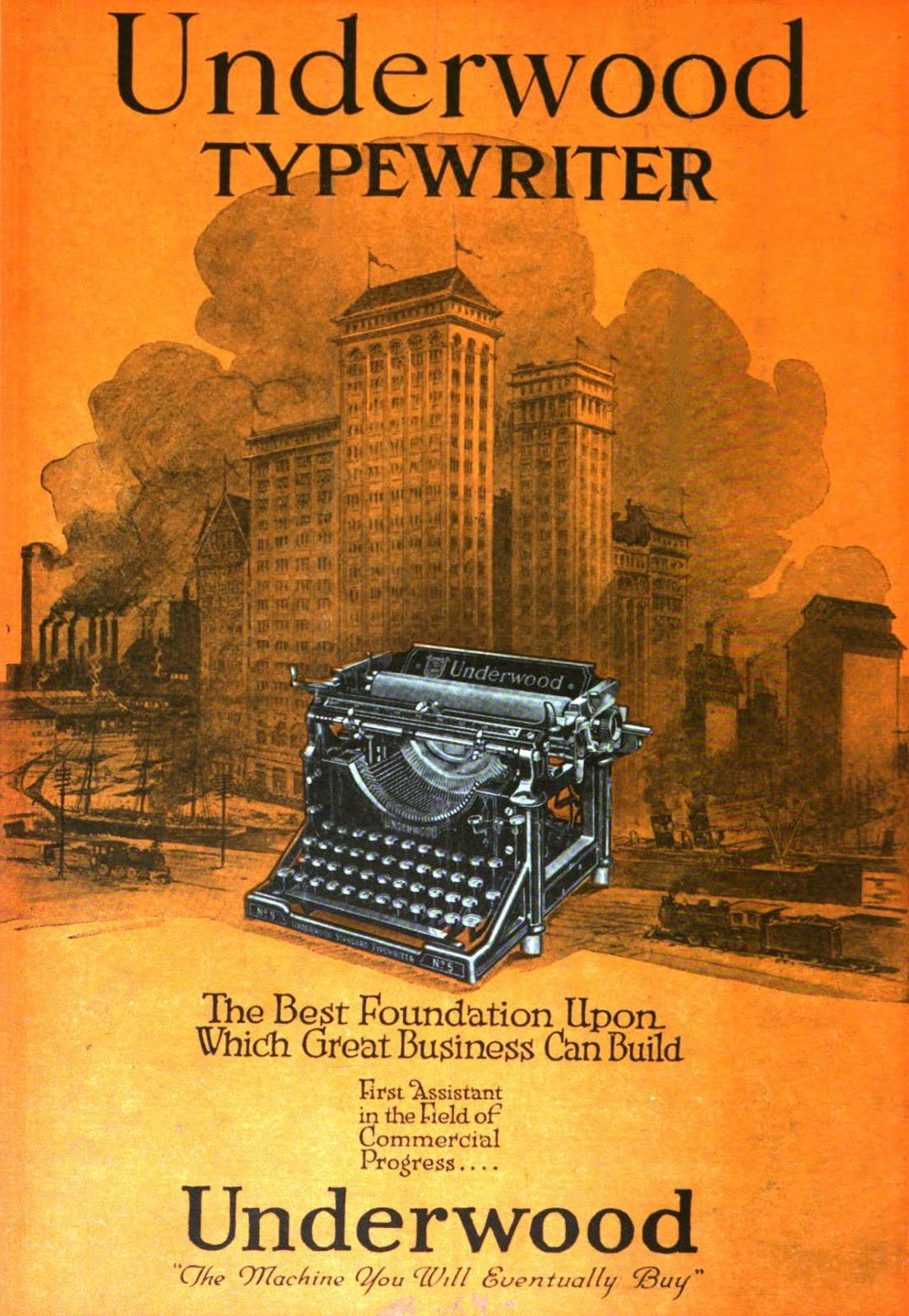
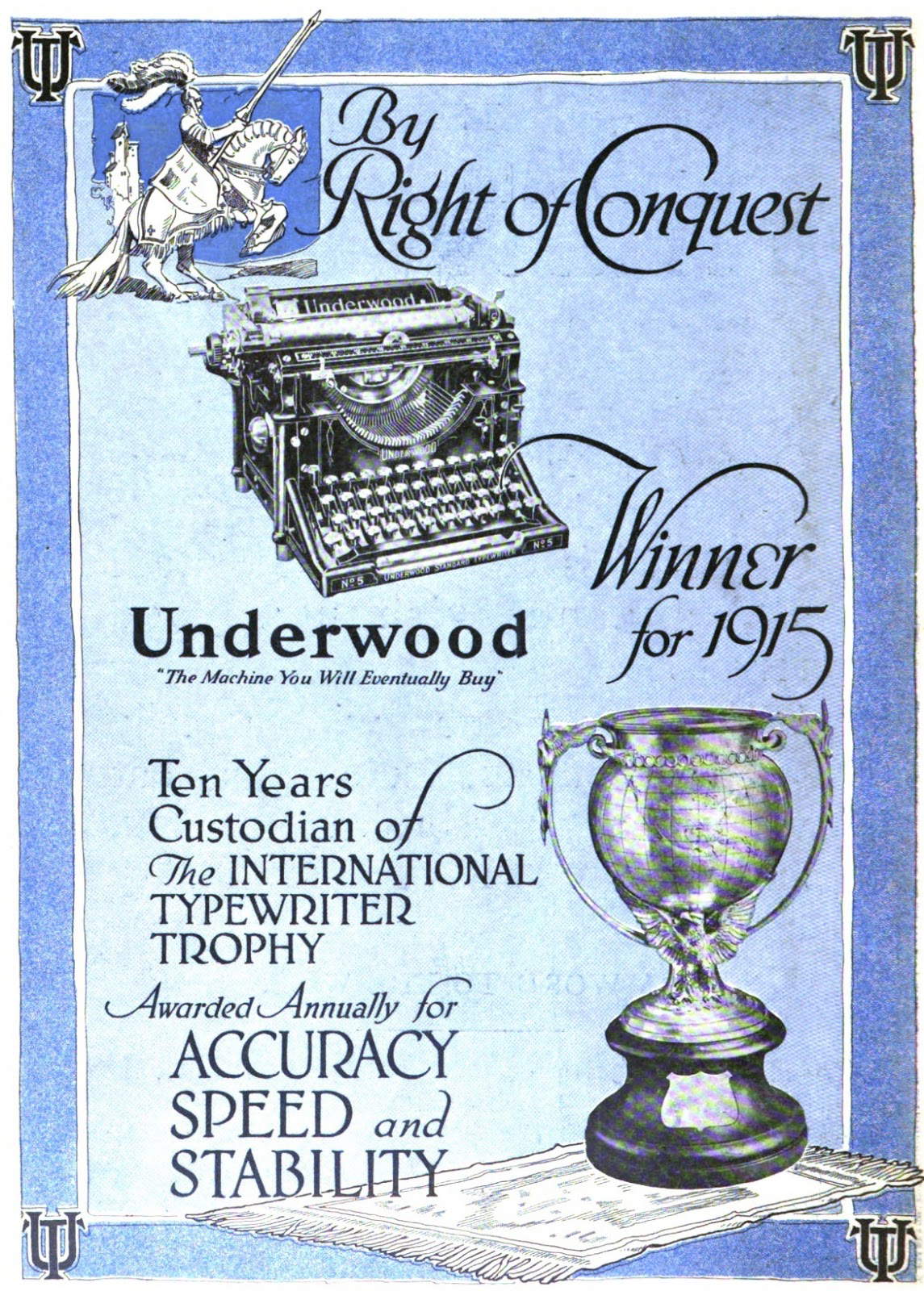
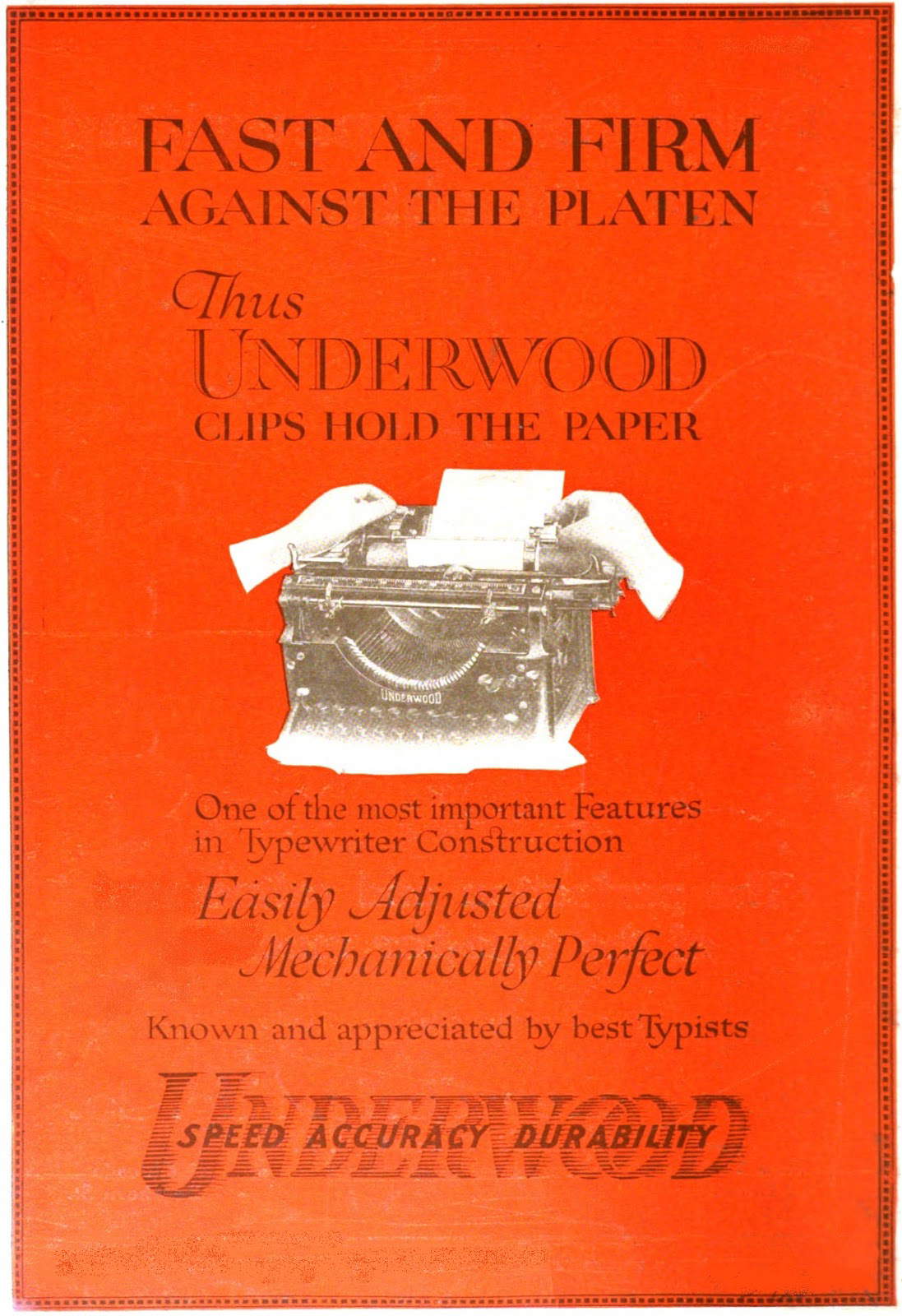
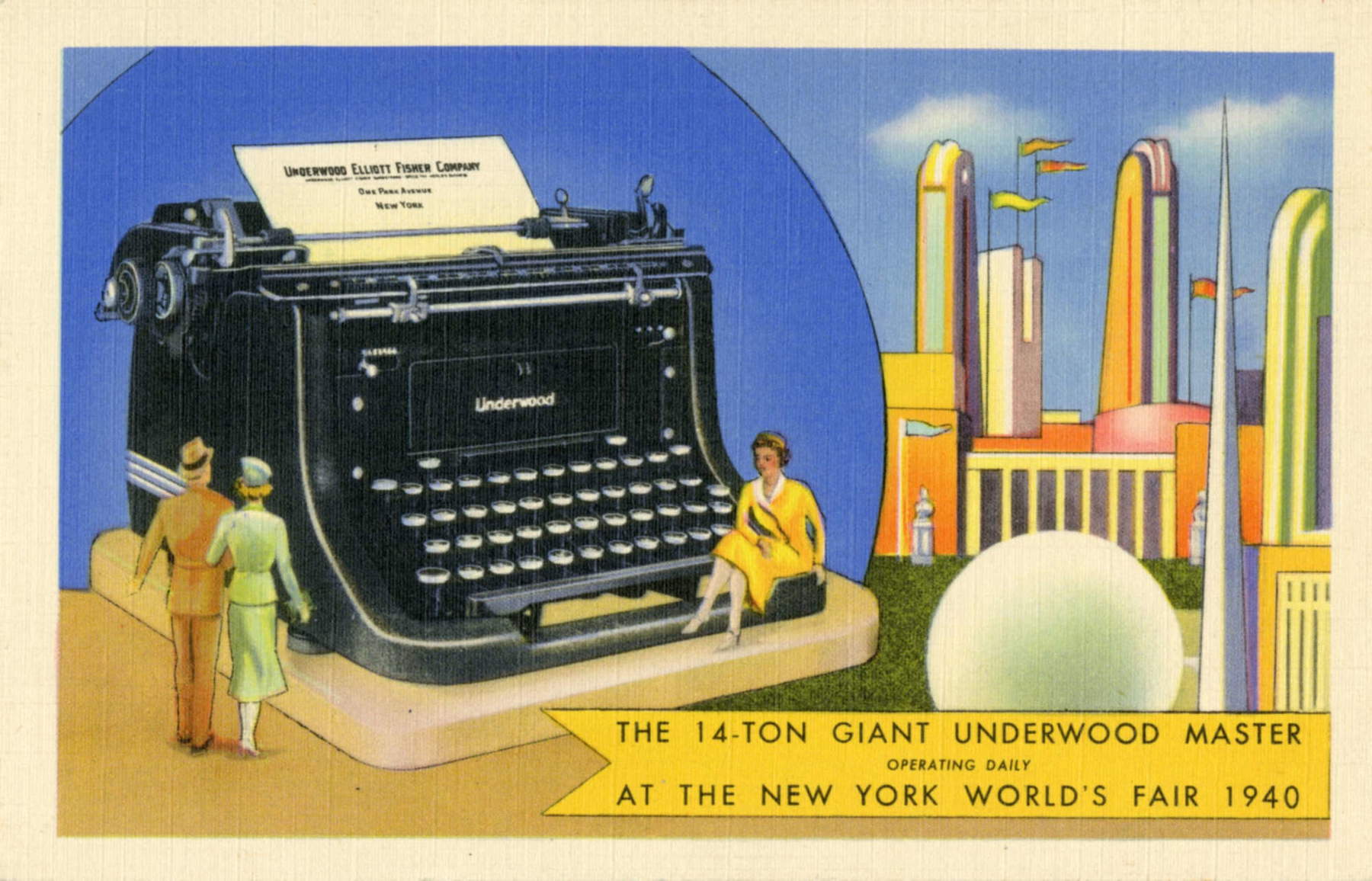
The ink ribbon was also significantly improved; in addition to providing clearer and more uniform printing, it was also designed to be changed quickly and easily.
Aesthetically, the Underwood No. 5 had a sleek and modern design for the time. The black-painted cast-iron frame with chrome details, clean lines, and open top panel showing the internal mechanisms made it a visually appealing object. The Italian keyboard had 42 round white keys framed by shiny metal and a wooden space bar painted black. Its appearance was solid and elegant and it perfectly combined practicality and beauty. It was compact, convenient for use in both work and home environments. This mix of power, reliability, and elegance perfectly embodied the aesthetic standards of the industrial age, and this helped make it one of the most beloved and widely used typewriters of the 20th century.
The No. 5 model became so iconic that, after World War I ended, for publicity purposes, a number of specimens of enormous proportions were even built, fully functional, about 5 meters high, 6 meters wide, and with sheets of paper nearly 3 meters wide, and placed in town squares or trade fairs. Unfortunately, these creations did not make it to the present day as they were later destroyed to recover metal to be used for war purposes.
Production of the Underwood No. 5 continued until 1931, with nearly four million made in factories in Hartford, USA, and distributed worldwide. The return of a nostalgia for an analog past in an increasingly digitized world has made it one of the most sought-after collectibles on the market, and Ebay, like many other vintage or secondhand trading platforms, is teeming with Underwood No. 5 machines that have often been maniacally restored and refurbished.
If we could talk to some of them they could tell us hundreds of stories, letters, or events that have occurred over years and years of history, but as of today we can only be content with preserving what remains of these objects that were able to revolutionize and democratize the world of communication and the art of writing.
Although we live in an age in which thanks to technologies and comforts of all kinds communicating, telling and writing has become extremely simple and within everyone’s daily reach, these machines do not cease to exert an enormous fascination on us, perhaps because they take us back to a past in which writing presumed reflection, slowness and time, things that nowadays have become profoundly rare and precious.
Warning: the translation into English of the original Italian article was created using automatic tools. We undertake to review all articles, but we do not guarantee the total absence of inaccuracies in the translation due to the program. You can find the original by clicking on the ITA button. If you find any mistake,please contact us.





